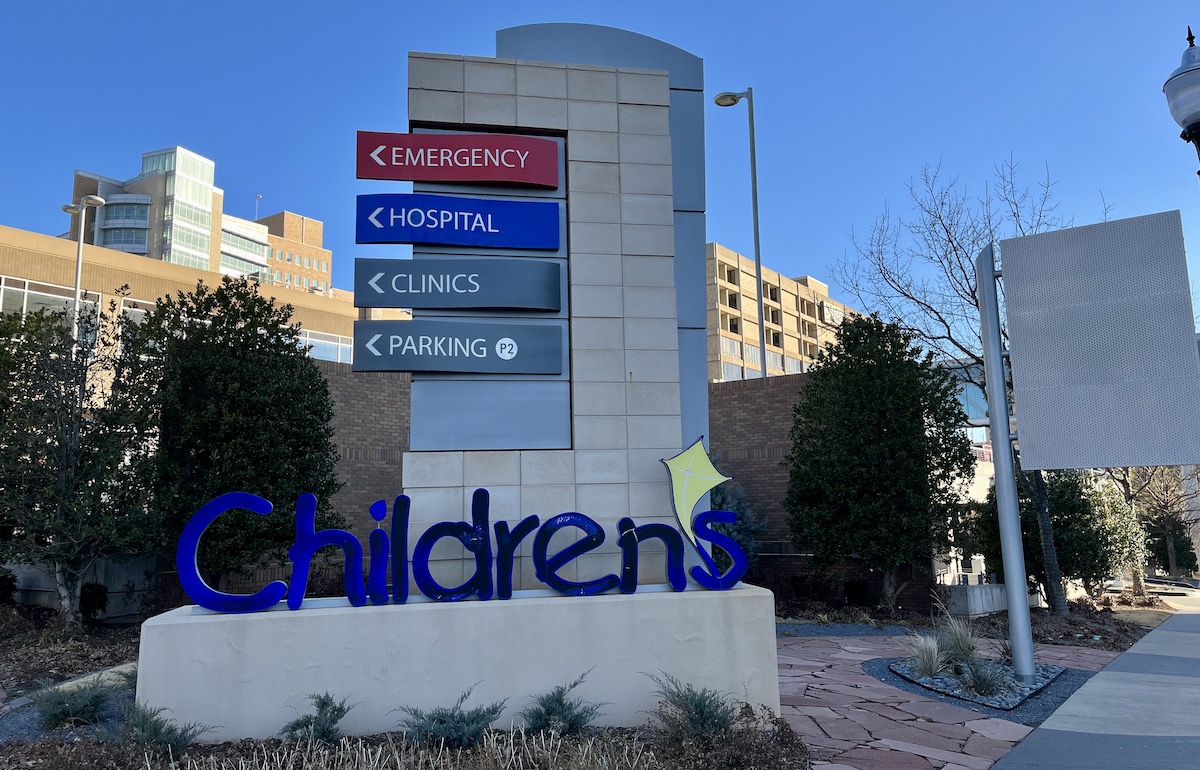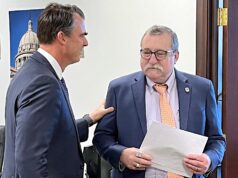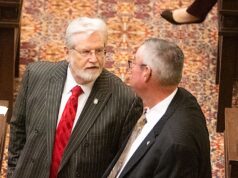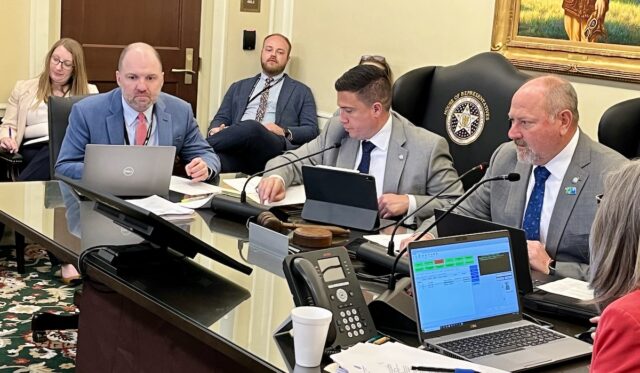
(Update: On Tuesday, April 18, Gov. Kevin Stitt vetoed SB 1130, calling it “imprudent.” The following story remains in its original form.)
In a move further underscoring tension about separation of powers between the legislative and executive branches of government, the Oklahoma Legislature’s Joint Committees on Appropriations and Budget advanced a bill today that functionally stops the Oklahoma Health Care Authority from spending $600 million without lawmakers’ input.
The Legislature’s budget chairmen expressed frustration that OHCA had been speaking with various public and private stakeholder groups about how they might use the money, which has been accumulated thanks to the federal government’s pandemic-related enhanced Federal Medical Assistance Percentage rate for Medicaid funding.
“It’s the Legislature’s responsibility to appropriate money. So we didn’t take it away from them, but we just appropriated it for Fiscal Year 2024 and tied up the money (until July 1) and said, ‘Let us look at it,'” Senate Appropriations and Budget Chairman Roger Thompson (R-Okemah) said Wednesday. “But let’s go through the appropriations process, and it will be the Legislature’s drive behind that on how it’s going to be spent.”
Earlier this week, House Appropriations and Budget Chairman Kevin Wallace (R-Wellston) expressed similar frustration with how OHCA has handled conversations about the funding.
Asked to describe OHCA’s proposals for the $600 million, Wallace said his conversation with the agency’s leaders involved “interesting” ideas.
“Strategic planning that is ‘transformational for the state.’ Those are their words, I don’t know,” Wallace said. “Something big, you know? From what I saw, not all of it even has to do with health care.”
Christina Foss, OHCA’s deputy chief of staff, also used the word “transformational” in a statement to NonDoc, although specific programatic concepts were not mentioned.
“Throughout the public health emergency, OHCA has provided the Legislature with regular status updates regarding the enhanced FMAP funds received through the Families First Coronavirus Response Act and has discussed with legislative leaders potential opportunities to use the uncommitted funds for transformational and sustainable investments to improve health outcomes in Oklahoma,” Foss said. “OHCA will continue to work with the Legislature to improve health care access and quality across Oklahoma.”
Thompson said “there were all kinds of plans out there,” including capital projects and even some sort of concept involving food as medicine.
“They were shopping around how we spend this money, how best we can use it,” Thompson said. “That’s not their job. That’s our job to do that.”
By advancing SB 1130 today, lawmakers essentially told OHCA that “it’s not your money to spend this fiscal year,” Thompson said. The bill specifies that the $600 million will be available for use in Fiscal Year 2024 or Fiscal Year 2025. In Oklahoma, fiscal years begin July 1 and end June 30.
Legislators have about seven weeks left to craft their FY 2024 budget agreement. During those negotiations — currently complicated by an ongoing chamber-to-chamber feud over a massive education funding and school choice proposal — the Senate and House will determine how OHCA should proceed with the FMAP carryover funds.
“There’s all kinds of people saying, ‘What are we going to do with this $600 million that we have as extra money at the Health Care Authority?'” Thompson said. “I even had an outside group come in that said, ‘There’s $600 million. What can we do for rural health care with that $600 million?'”
Thompson confirmed that the University of Oklahoma and Oklahoma State University had also been involved in the Health Care Authority’s discussions.
“I’ve had visitors from both OU and OSU saying, ‘Hey, if there’s $300 million you had, what would you do for rural health?’ Well, when did they get to make those decisions? I mean, that’s a legislative thing,” Thompson said. “Now, if they want to come have a conversation, I love conversations. But whenever you start looking at how to appropriate money at an executive-branch agency, that’s what we do. We can’t get over into the executive branch and tell them how to execute what the legislative body has done, but we ought to have the right to at least legislate.”
Budget leaders feeling better about OU Health situation
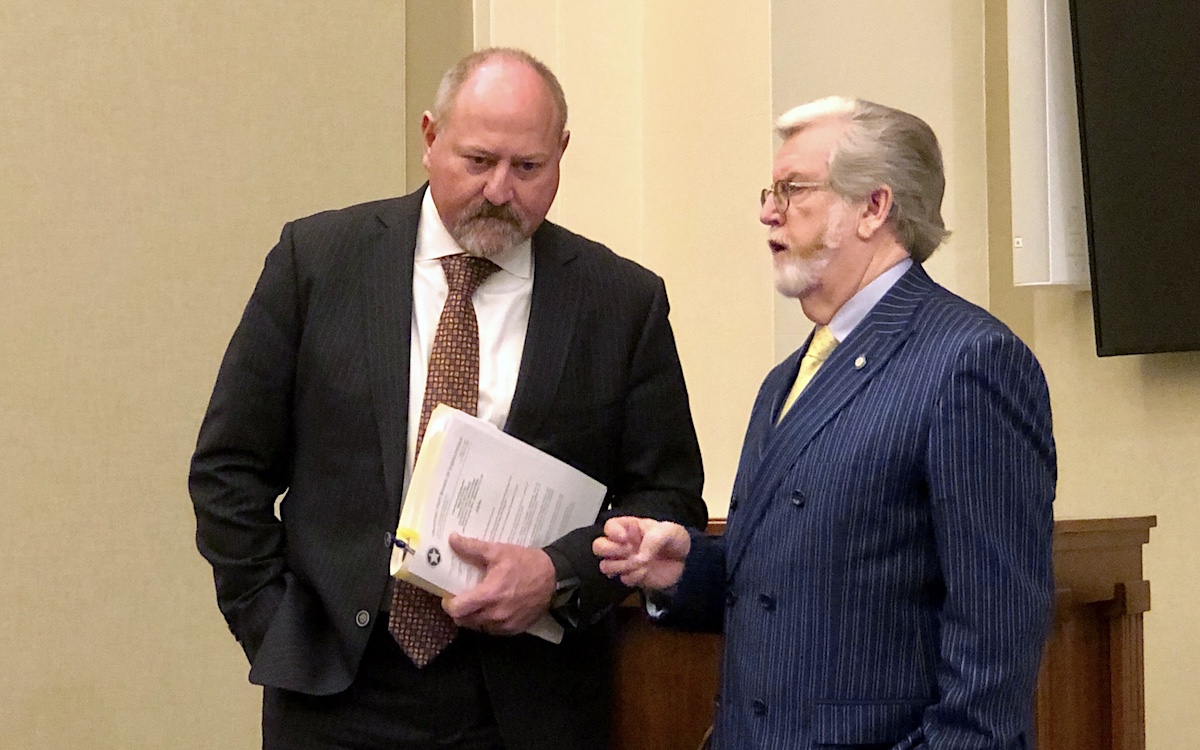
Thompson said the Oklahoma Health Care Authority has also had conversations with OU Health, the state-supported hospital enterprise that partners with the University of Oklahoma Health Sciences Center and the OU College of Medicine to operate a fully integrated academic health system.
OU Health’s massive debt load and recent restructuring efforts have been of interest to both Wallace and Thompson as they craft the FY 2024 budget. Although Wallace previously said he had heard rumors about OHCA offering OU Health additional financial support, Kevin Corbett, the Health Care Authority’s CEO, said that is not the case.
“OHCA has not discussed any sort of bail out of OU Health and have communicated that to legislators who inquired,” Corbett said in a March 14 email to NonDoc.
This week, both Wallace and Thompson said they believe OU Health has stabilized its financial situation and will achieve its goal of having 45 days cash on hand by June 30.
To that end, OU Health leaders and lobbyists attended separate meetings Wednesday morning with Wallace and Thompson, which Thompson said involved a financial review he had been looking forward to.
“I want to do comparative finances of where they are today to where they were last year. The plan they have in place seems to be working, which I am very thankful for,” Thompson said. “Their contract labor is way down. They laid off the 100 people, which is saving them a lot of money. So I feel like we are on a very positive track.”
Asked if the Legislature is considering additional appropriations to support OU Health through the University Hospitals Authority and Trust, Thompson noted a difference between operational support and programmatic or capital project funding.
“As far as on their business plan, I do not intend to add any funds to it for their business plan,” Thompson said.
Asked about funding to support service of OU Health’s more than $1 billion in debt, Thompson expressed less certainty. He gave a similar response when asked about potential capital projects or programs involving OU Health.
“Those things, I think they’ve got in mind,” Thompson said. “There are some areas we may look at as far as enhancing what OU is doing, maybe in their engineering program or something like that.”
Earlier this week, prior to Wednesday’s meetings with OU Health leaders, Wallace said it’s too soon to tell whether the organization will need additional support to cover its debt obligations and achieve the cash on hand required to avoid further bond rating downgrades.
“We’ll see where they’re at,” Wallace said. “They haven’t asked for anything.”
On March 23, two weeks after the publication of an article outlining OU Health’s debt obligations, a University of Oklahoma spokesperson responded to a series of questions NonDoc had asked Jan. 20.
RELATED
Debt, finances leave Legislature ‘concerned’ about OU Health problems by Tres Savage
Melissa Caperton, OU’s acting chief communications officer, provided clarity about a previously unspecified loan involving OU Health, the OU Foundation and the OU Health Sciences Center. The $135 million loan originated in 2018 when OU Health — then branded as OU Medicine — paid nearly $1 billion to buy out HCA Healthcare, the private hospital management company that had operated OU’s hospital system since 1998.
Although the $135 million loan technically involves OU Health borrowing funds from the OU Foundation, Caperton said the money loaned to OU Health actually comes from public assets of the OU Health Sciences Center that had previously been dedicated for investment at the OU Foundation.
“OUHSC investment assets already being managed by the OU Foundation under an investment services agreement were directed by the OU Board of Regents to fund a $135 million loan agreement with OU Medicine, Inc. (OU Medicine),” Caperton wrote. “The effective date of the funding was Jan. 31, 2018.”
Caperton noted that more information about the loan can be found in the OU Foundation’s consolidated financial statements, specifically under “Note 7 – Assets Held for Others.” The document describes the arrangement:
On January 31, 2018, as directed by the Board of Regents, the Foundation entered into a $135,000,000 loan agreement with OU Medicine, Inc. (OU Medicine). OU Medicine, a not-for-profit corporation, is affiliated with the university and is not a subsidiary or affiliate of the foundation. The investment by OUHSC in OU Medicine is being facilitated by the foundation based on the amended investment services agreement. (…)
Interest accrues on the note at an interest rate of 5 percent, and the transactions consist of collection of various payments based on certain operating conditions being met by OU Medicine. Initial payments began during the year ended June 30, 2021, and will continue annually through December 15, 2032. As stated within the loan agreement, the maximum annual payment from OU Medicine in a single period cannot exceed $17,500,000. This separate investment vehicle is included in the foundation’s non pooled investments and is considered an alternative investment.
The described “amended investment services agreement” was approved at an Oct. 24, 2017, meeting of the OU Board of Regents. That meeting’s official minutes make no mention of a $135 million loan of OUHSC assets to OU Medicine, instead referring to “strategic investment opportunities” supporting OUHSC’s mission:
Through the University of Oklahoma Foundation, Inc. (Foundation), the University of Oklahoma Health Sciences Center is seeking approval to participate in strategic investment opportunities that will support the mission of the Health Sciences Center to educate students, residents and other trainees, advance research and deliver exceptional patient care across the full breadth of adult, women’s, and children’s specialties. Funds contemplated for this investment are excess, expendable funds currently invested in an intermediate term fund managed by the Foundation, as authorized under current investment policies.
President Boren recommended the Board of Regents approve an amendment to the Investment Services Agreement with the University of Oklahoma Foundation, Inc. to include additional mission driven strategic investments options for the Health Sciences Center and authorize the Vice President for Administration and Finance at the Health Sciences Center to do all things reasonably necessary and convenient to consummate the action contemplated herein. An executive session may be proposed in regards to property pursuant to Section 307B.3
The motion passed unanimously.
After learning the details of the OU Health loan from the OU Foundation using OUHSC assets, Wallace said “it does” muddy the waters regarding the potential for additional legislative financing of OU Health.
“I still believe they have a strategic plan. They’ve made a lot of the tough decisions already,” Wallace said. “I do believe that when they tell me they’ll be over 45 days cash on hand by the end of this fiscal year, I think they will make it.”
Asked if OU Health made its payments on the loan to the OU Foundation last year, Caperton, the OU spokesperson, said “OU Health upheld its academic support payments to the university in FY 2022.”
“These arrangements, often called mission support, are a common feature in academic health systems across the country and provide funding from the clinical enterprise to support a university’s academic and research missions,” she wrote. “FY 2022 was a transition year due to the merger to create OU Health in June 2021, and OU Health is living up to its mission support obligation in FY 2023.”









